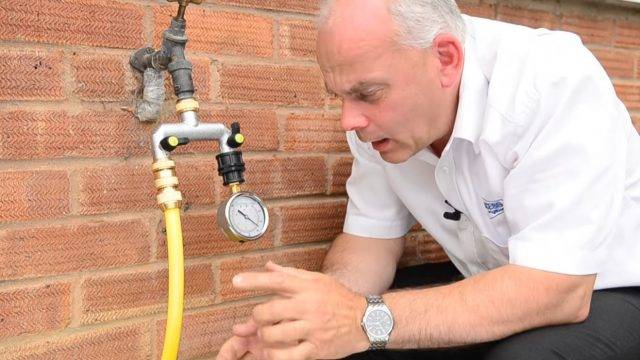
Why test?
Small irrigation systems such as drippers can generally be run off the mains water supply without problems, but as water flows get larger there is the danger that the water supply will not be large enough. In addition, sprinkler systems require a certain pressure to operate.
If there is too little flow or pressure then the irrigation system will not work properly.
Testing pressure and flow
To ensure the irrigation system will work as planned it is vital to have some flow and pressure information from the water source. With this information available we can then ensure that the system is designed around the available supply – if the pressure is too low a pump can be specified. If the flow is too low the irrigation system can be divided into zones to ensure there is always enough water to operate the irrigation system.
Although it may seem like extra work to obtain the pressure and flow data, it will save embarrassment later on when the irrigation does not work properly, and the cost of relaying pipes and adding extra valves to remedy the situation at a later date.
This video explains the equipment needed and the process of measuring the water flow. You will need a pressure gauge and a bucket with litre graduations. The process is briefly outlined below:
-
- Obtain a static pressure – with the outlet valve closed measure the static pressure on the gauge. In the video this was just under 4 bar, which is very good for a domestic supply.
- Obtain flows at set pressures – as the outlet tap is opened the pressure will drop – the more flow the lower the pressure. We wish to obtain flow readings at 3.0, 2.0 and 1.0 bar. To do this we shall slowly open the tap until the dial on the pressure gauge is reading 3.0 bar. If you are using a smaller container, time how long it takes to fill the container at this pressure and note it down.
- Calculate flows – once you have the data you need to translate the flow into litres per hour. To do this divide the capacity by the time it took. For example when the flow was measured at 3.0 bar, if the bucket had 5 litre graduation marks and it took 20 seconds, divide 5 (litres) by 20 (seconds). Then multiply the result by 3,600 (the number of seconds in an hour). Eg. 5 divided by 20 times 3,600 = 900 litres per hour.
- Using the data – once you have calculated the flow for each of the pressure points, either send the information to us along with the plan of the garden, or plot a graph of the data to help you design the system yourself.
If you are using a large container as in the video, time how long it takes to fill from one marked capacity to the next mark. Note the flow and the volume you have filled. Open the tap slowly until the pressure gauge reads 2.0 bar and repeat. Repeat for 1.0 bar.
Pressure and Flow:
3.0 bar 900 l/h
2.0 bar 1,240 l/h (You will notice that as the pressure falls the flow increases)
1.0 bar 1,450 l/h